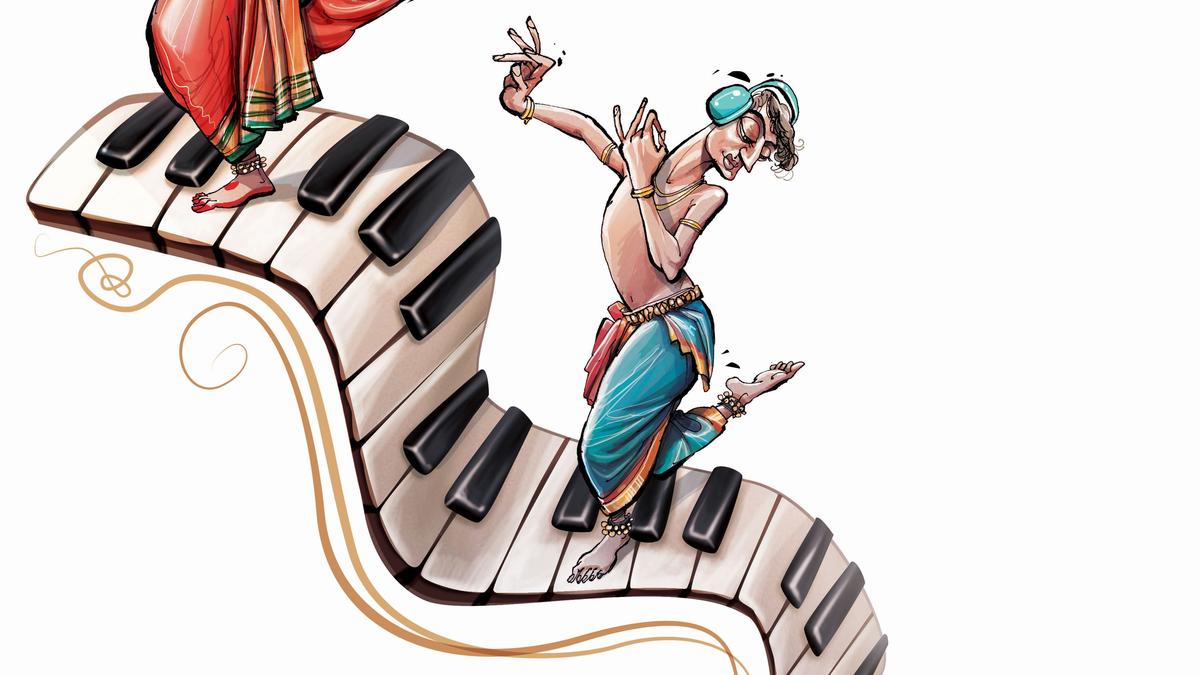
How movement, mudras and music heal the mind
The Hindu
Mental Health Awareness: How practising classical arts would enhance mental well-being
Keep your hand straight my child,” coddles the teacher. Little hands contort into a 2,000-year-old mudra. Fingertips touch, neurons fire, and that little brain processes neuroplasticity at a magnitude that is still misunderstood.
Classical dance has been scientifically documented by several prestigious research organisations such as Sarah Lawrence University and the National Institues of Health, Maryland. Not only does classical dance have documented mental health benefits, classical music has also been well-researched as both a complementary treatment for several major disorders, and a healthy practice for general well being. Albert Einstein Medical College executed a study comparing the brain scans of subjects prescribed treadmill walking for six months versus those prescribed ballroom dancing. Dance was found to prevent cognitive decline and reduce the risk of Alzheimer’s.
Indian classical dance has been lauded for its neurobiological complexity. The nuance of hand-eye coordination specifically operates through neuroplasticity — our brain’s ability to change through growth and reorganisation, utilising its neural networks. There is an overwhelming amount of research in favour of the mudra, both in a yogic and dance context. If we examine the practice of mudras in dance, it is apparent that there is an underlying significance to the choice of fingers touching as well as the movement of the actual hand itself.
Laura Wimberger, a neurological meditation practitioner, has developed a modality of training the brain called neurosculpting. In her practice, the left and right hands often move in different directions and hold different gestures. She explains how these practices increase memory, protect neural function and utilise different parts of the brain. One cannot help but correlate her practices to the gestural depiction of performing aarthi in classical dance. The shikara mudra remains firmly planted in the left hand, shaking like a bell, while the pataka mudra assumed by the right hand maintains a clean horizontal line while drawing a circle in the air. This simple gesture has within it over seven different mechanisms to nourish, tone and protect the brain!
Yet with so many overwhelming benefits, it feels as though practicing dancers seem to be constantly under stress. Indian classical dance has become so competitive that young dancers often feel an overwhelming pressure to keep up with their peers and produce new repertoire on command. Social media presence is almost mandated in the current scenario, placing even more pressure on young dancers and musicians to give a glimpse of their yoga routine, studio work, practice sessions and even the occasional recreation of a film song. Are they reaping the true benefits of the art?
When one examines the history of Indian classical dance practices, it becomes apparent that the dance cannot be divorced from the temples and the courts. While hereditary dancers might have had healthy competition amongst themselves, one wonders if it can compare to fighting for a slot at a sabha during the December Season or for an award. When the purpose of a form was to immerse oneself in devotion, or even to entertain the audience, innovation becomes an extension of creativity and not a race for survival. It is on the proscenium that dance has found its most cut-throat form — from televised competitions to festivals that award innovative choreography. To take a form that was designed for self-expression and standardise it into a ruthless, athletic race is perhaps one of the reasons why so many dancers struggle to find joy in the profession. While the dance itself always remains a source of solace, the networks around it tend to deplete dancers of their mental peace.
In Australia, artistes are 20 times more likely to have mental health issues, and in the U.K. more than 46 per cent report below average mental health. Such studies haven’t been done at scale in India, but it would be not be surprising if the numbers were an extension of the global trend. Artistes are often isolated, and it appears that those with better social skills tend to secure better opportunities. What kind of ecosystem do we want to build for our future? What direction should Indian classical dance and music move in?











